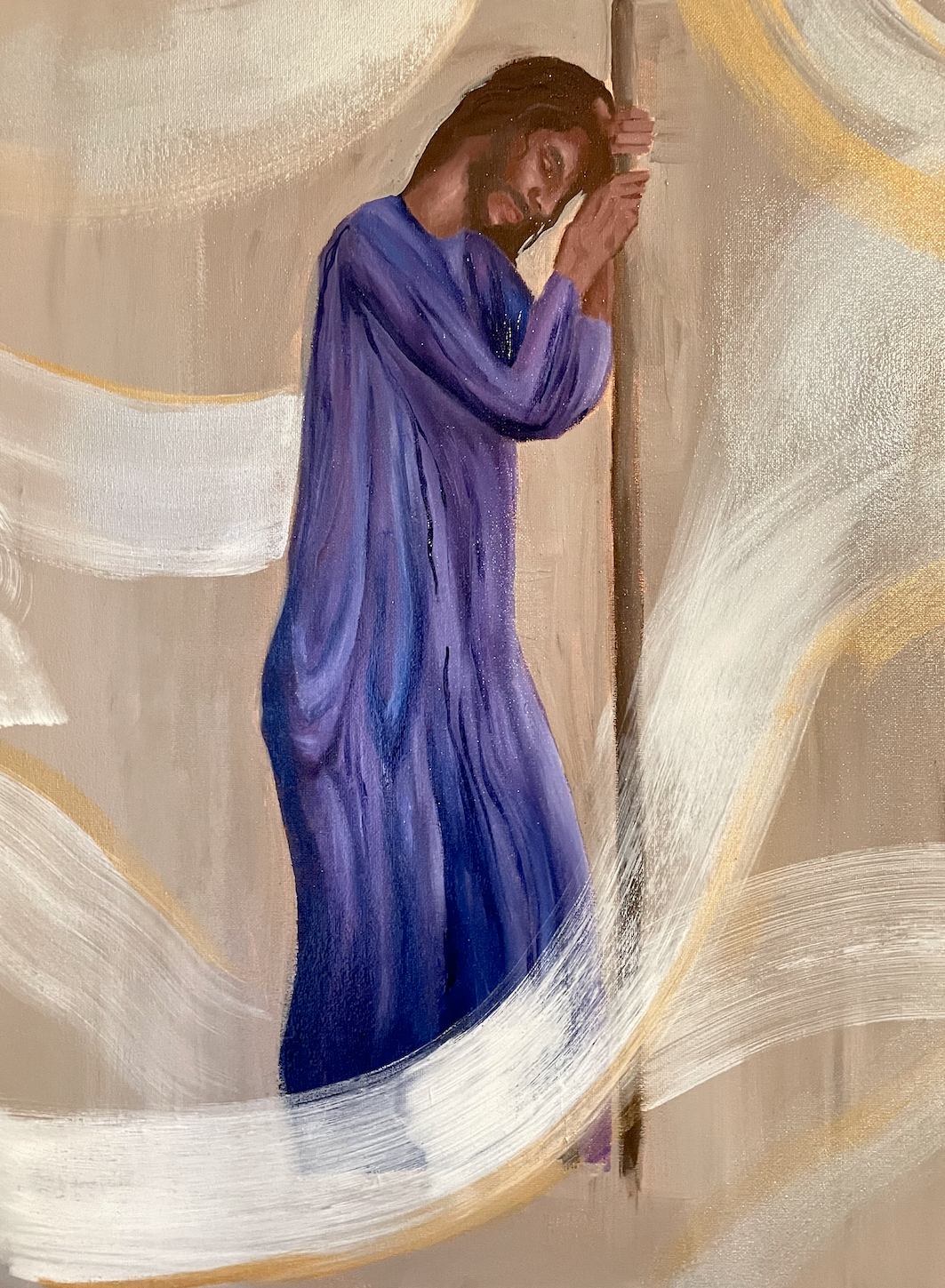In the fourth painting of the series, Moses is seen gripping the staff he dips into the Nile River. The context revolves around Ramses doubting and mocking the power of the Hebrew G-d. In turn, G-d says to Moses, “Take the staff in your hands,” and in a single motion, the water beneath Moses’ feet turned to blood.
The composition of the painting is vital to the story telling. In the Movie, Moses looks down only for a second, before stands tall and strong, looking across the river to Ramses staring in disbelief. In the painting, however, Moses is painted with closed eyes and his head hanging. His body language symbolizes two things: (1) the motion from which G-d’s power travels, from above to below, and (2) Moses does not need to see to believe.
Moses can also be interpreted as leaning on the staff for support. In the Movie, his initial approach to Ramses was brother-to-brother, heart-to-heart, sharing that G-d had come to him with a mission to free the Hebrew slaves. Ramses did not feel the weight of Moses’ words, leaving Moses no choice but to act as a vessel for the fate for which G-d promised the Hebrews.
The third interpretation could be that Moses feels the weight of what’s about to come, after turning the Nile to blood.
In the Book of Exodus, the Nile turning to blood is the sign of the first plague. Though the Nile isn’t included in this painting, the swirls surrounding Moses act almost as ripples, foreshadowing the ripple effect of the other plagues to come.
The largest brushstroke on the painting, the one in front of Moses, is a reminder that though chaos was about to pursue, there was a higher plan or direction. Though chaos may have a random or scattered implication, this brushstroke serves as a reminder that everything ultimately aligns.

